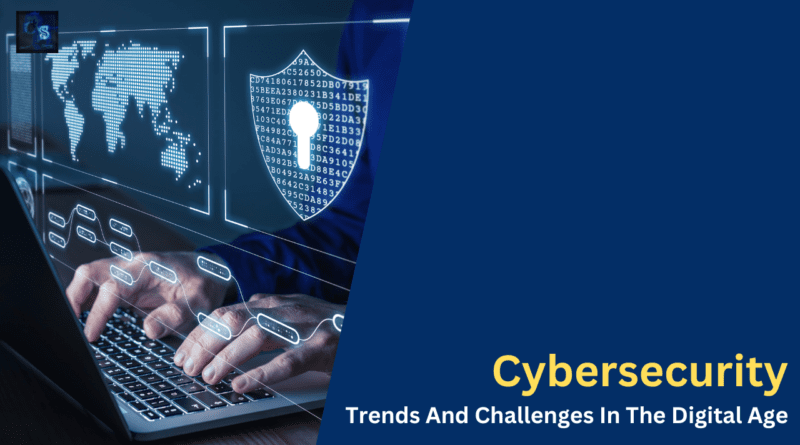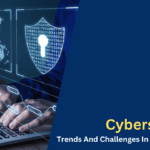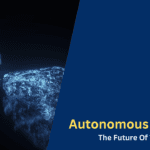Cybersecurity Trends And Challenges In The Digital Age
Hello, guys, welcome to our blog. Here in this article, we will discuss Introduction to Cybersecurity, Evolution, Trends, and Challenges of Cybersecurity in the Digital Age.
Ask questions if you have any electrical, electronics, or computer science doubts. You can also catch me on Instagram – CS Electrical & Electronics.
Also, read:
- Difference Between AC And DC Motors, Electrical Engineer Must Know
- Estimation Of Transmission Lines, Materials Required For 66 KV
- C Language Interview Questions On Programs With Output
Introduction Of Cybersecurity
Cybersecurity, a critical discipline in the realm of information technology, is dedicated to safeguarding digital systems, networks, and data from unauthorized access, attacks, and damage. As our interconnected world relies increasingly on digital technologies, the importance of cybersecurity has become paramount in protecting sensitive information, ensuring privacy, and maintaining the integrity of online systems.
The advent of the internet and the proliferation of digital communication have significantly expanded the attack surface for malicious actors, making robust cybersecurity measures indispensable. Cyber threats come in various forms, including malware, phishing attacks, ransomware, and sophisticated hacking attempts. Cybersecurity professionals employ a combination of proactive measures and reactive strategies to identify, mitigate, and respond to these evolving threats.
One fundamental aspect of cybersecurity is the establishment of a secure perimeter around digital assets. This involves implementing firewalls, intrusion detection systems, and other protective measures to prevent unauthorized access. Additionally, encryption technologies play a crucial role in securing data both in transit and at rest, ensuring that even if intercepted, sensitive information remains unreadable to unauthorized entities.
As technology evolves, so do the strategies employed by cybercriminals. Cybersecurity professionals must continually adapt and innovate to stay ahead of emerging threats. This involves ongoing monitoring, threat intelligence analysis, and the development of resilient security frameworks capable of withstanding sophisticated attacks.
The interconnectedness of devices in the era of the Internet of Things (IoT) adds another layer of complexity to cybersecurity. Securing a diverse range of devices, from smart home appliances to industrial sensors, requires a comprehensive approach to address vulnerabilities and potential entry points for cyber threats.
Beyond technological safeguards, user education and awareness form a critical component of cybersecurity. Human error remains a significant factor in security breaches, and educating individuals about safe online practices, recognizing phishing attempts, and employing strong password management is essential in creating a more resilient digital environment.
In the face of ever-growing cyber threats, governments, businesses, and individuals alike recognize the necessity of investing in robust cybersecurity measures. From protecting sensitive corporate data to safeguarding personal information, cybersecurity is a dynamic and essential field that continues to evolve to meet the challenges posed by the digital age. As technology advances, the role of cybersecurity will only become more critical in preserving the integrity, confidentiality, and availability of digital assets.
Evolution of Cybersecurity
The evolution of cybersecurity traces a compelling journey from the early days of computing to the complex digital landscape of today. Each phase reflects the relentless efforts to secure information systems in response to emerging threats and technological advancements.
1. Early Computer Security (1960s-1980s): The inception of cybersecurity can be traced back to the early days of mainframe computers. Security measures were primarily focused on physical controls, restricting access to computer rooms. As networks expanded, the concept of user authentication emerged, with password protection becoming a rudimentary form of safeguarding systems.
2. Rise of Malware and Antivirus (1980s-1990s): The 1980s witnessed the rise of malicious software, or malware, with the emergence of viruses and worms. The first notable computer virus, the Morris Worm, highlighted vulnerabilities in networked systems. Antivirus software became a crucial defense mechanism during this period, providing a means to detect and remove malicious code.
3. Internet Era and Networking (1990s-2000s): The widespread adoption of the Internet brought new challenges. Cybersecurity efforts expanded to protect interconnected networks. Firewalls and intrusion detection systems (IDS) became essential tools to monitor and filter network traffic. Encryption technologies also gained prominence for securing data in transit.
4. E-Commerce and Cybercrime (Late 1990s-2000s): The growth of e-commerce introduced new security concerns, particularly related to online transactions and personal data. Cybercriminals began exploiting vulnerabilities in web applications and databases. Secure Socket Layer (SSL) encryption became standard for securing online communications, and the Payment Card Industry Data Security Standard (PCI DSS) was established to enhance credit card data protection.
5. Advanced Persistent Threats (APTs) and Nation-State Attacks (2010s): The 2010s saw a significant increase in sophisticated cyber threats, including Advanced Persistent Threats (APTs) and state-sponsored attacks. These attacks are aimed at espionage, data theft, and disrupting critical infrastructure. Cybersecurity strategies evolved to include threat intelligence, behavioral analytics, and more advanced detection and response capabilities.
6. Cloud Computing and Mobile Security (2010s-Present): The widespread adoption of cloud computing and mobile technologies introduced new dimensions to cybersecurity. Securing data in shared cloud environments and managing the security of diverse mobile devices became paramount. Mobile Device Management (MDM) and Mobile Application Management (MAM) solutions emerged to address these challenges.
7. Internet of Things (IoT) Security (Present and Beyond): The proliferation of Internet of Things (IoT) devices has added complexity to the cybersecurity landscape. Securing a vast network of interconnected devices, often with limited security features, poses unique challenges. Cybersecurity strategies now include measures to protect IoT devices and the ecosystems they operate in.
8. Artificial Intelligence (AI) and Machine Learning (ML) in Cybersecurity: As cyber threats become more sophisticated, AI and ML are being employed in cybersecurity for predictive analysis, anomaly detection, and automated response. These technologies enhance the ability to identify and mitigate threats in real time.
9. Zero Trust Security Model (Present): The Zero Trust Security Model is gaining prominence, challenging the traditional perimeter-based approach. It emphasizes continuous verification of identities and devices, assuming that threats can exist both inside and outside the network. Zero Trust aligns with the dynamic and decentralized nature of modern computing environments.
The evolution of cybersecurity reflects an ongoing battle between security professionals and malicious actors, driven by technological advancements and the increasing interconnectedness of digital systems. The field continues to adapt, innovate, and collaborate to stay ahead of emerging threats in our ever-evolving digital landscape.
Trends and Challenges of Cybersecurity In The Digital Age
Trends in Cybersecurity:
1. Zero Trust Security Model: The Zero Trust approach, which assumes no inherent trust, is gaining traction. Organizations are moving away from traditional perimeter-based security models to continuously verify and authenticate users, devices, and applications, irrespective of their location.
2. Artificial Intelligence (AI) and Machine Learning (ML): AI and ML are increasingly integrated into cybersecurity solutions. These technologies enhance threat detection, automate responses, and provide predictive analysis, enabling faster and more accurate identification of potential security incidents.
3. Cloud Security: With the widespread adoption of cloud services, ensuring the security of data stored in cloud environments is a top priority. Cloud security solutions are evolving to provide robust protection against data breaches, unauthorized access, and misconfigurations.
4. Internet of Things (IoT) Security: As IoT devices become ubiquitous, securing the expanding network of interconnected devices poses significant challenges. Cybersecurity strategies are adapting to address the unique vulnerabilities associated with IoT, including device authentication, data encryption, and firmware integrity.
5. DevSecOps Integration: Integrating security into the DevOps (Development and Operations) lifecycle, known as DevSecOps, is becoming a standard practice. This approach emphasizes collaboration between development, operations, and security teams to ensure that security is an integral part of the software development process.
Challenges in Cybersecurity:
1. Evolving Threat Landscape: The dynamic and evolving nature of cyber threats presents an ongoing challenge. Cybercriminals continuously develop new tactics, techniques, and procedures (TTPs), making it essential for cybersecurity professionals to stay ahead of emerging threats.
2. Insider Threats: Insider threats, whether unintentional or malicious, remain a significant concern. Organizations face the challenge of balancing security measures while maintaining trust in their workforce. Employee awareness training and robust access controls are critical components of addressing this challenge.
3. Ransomware Attacks: Ransomware attacks, where cybercriminals encrypt data and demand payment for its release, continue to escalate. Defending against ransomware involves a combination of proactive measures, robust backup strategies, and employee education to prevent phishing attacks, a common entry point for ransomware.
4. Supply Chain Vulnerabilities: The interconnected nature of supply chains exposes organizations to potential security risks. Cybersecurity challenges extend beyond an organization’s immediate infrastructure to include third-party vendors and partners. Managing and securing the entire supply chain ecosystem is a complex task.
5. Skill Shortage in Cybersecurity: The demand for skilled cybersecurity professionals exceeds the available talent pool. This skill shortage hampers organizations’ ability to effectively address emerging threats and implement robust cybersecurity strategies. Upskilling initiatives and workforce development are essential components of overcoming this challenge.
6. Compliance and Regulatory Complexity: Compliance with various cybersecurity regulations and standards adds complexity to organizational cybersecurity efforts. Navigating the landscape of different regulatory requirements and ensuring compliance can be resource-intensive for businesses operating across multiple jurisdictions.
7. Increased Sophistication of Attacks: Cyberattacks are becoming more sophisticated, often combining multiple techniques to bypass traditional security measures. Advanced Persistent Threats (APTs) and nation-state-sponsored attacks pose significant challenges due to their ability to remain undetected for extended periods.
8. Quantum Computing Threats: The advent of quantum computing brings both promise and challenges to cybersecurity. While quantum computing has the potential to break current encryption algorithms, it also offers the opportunity to develop new, quantum-resistant cryptographic methods.
Navigating these trends and challenges requires a holistic and adaptive approach to cybersecurity. Organizations must continuously assess their security posture, invest in cutting-edge technologies, and prioritize the development of a skilled and knowledgeable cybersecurity workforce. Additionally, fostering a culture of cybersecurity awareness among all stakeholders is crucial in mitigating the evolving risks in the digital age.
This was about “Cybersecurity Trends and Challenges in the Digital Age “. I hope this article may help you all a lot. Thank you for reading.
Also, read:
- What is XCP (Universal Measurement and Calibration Protocol)? Introduction, Working, Purpose, Applications
- What Is SIL Testing, Software-In Loop, Working, Purpose
- UDS (Unified Diagnostic Services) Tutorials For Automotive Engineers
- Difference Between AC And DC Motors, Electrical Engineer Must Know
- Estimation Of Transmission Lines, Materials Required For 66 KV
- C Language Interview Questions On Programs With Output
Author Profile
- Content Writer








